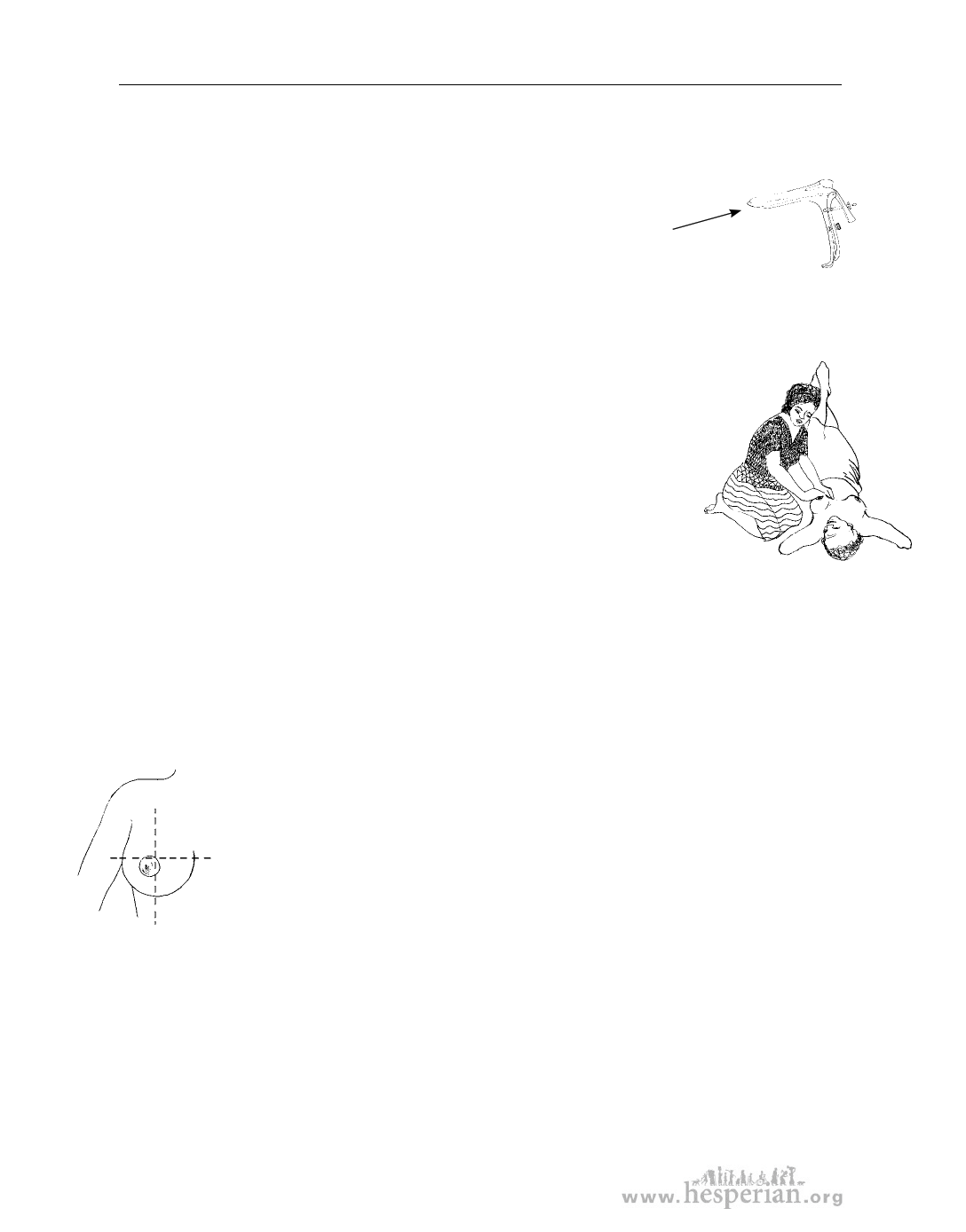
128 chapter 6: Health exams
Health workers can help:
• Explain the exams again right before. Explain what will happen before starting
the exams and ask if she has any questions. She will probably be less
afraid if she can ask questions before the exams start.
• Show her any instruments you will use, such as the speculum.
Make sure she knows what the speculum is before the pelvic exam so that
it does not surprise her, and let her touch it if she wants to.
• Talk to her during the exams. Explain what is happening at each step. Tell her
what you need to do next. Ask her if she is ready and wait for her to agree.
That way she has some control over what happens.
The breast exam
A regular breast exam is a good way to make sure you do not have any
signs of breast cancer. Most women have some small lumps in their
breasts. These lumps often change in size and shape during her monthly
cycle. They can become very tender just before monthly bleeding.
Sometimes—but not very often—a breast lump that does not go away
can be a sign of breast cancer. Many women get breast cancer which, if A sister or friend can do a
not treated, can kill you. Regular breast exams ensure that cancer can be breast exam for you if you
found and treated early, when it can still be cured.
cannot.
A trained health worker should examine your breasts every time you have a regular
check-up or pelvic exam. She will use the exam method described in this chapter.
Even though a health worker may examine your breasts every year or two, you
can examine your own breasts more often.
If you cannot do it yourself, someone you trust can do it for you.
It is best to get the same person to help each time. That way, the
person who helps will know if something changes.
If your breasts are
large, divide them
into 4 parts and
examine them one
part at a time. You
can draw a picture
like this and make
a mark if you find a
lump anywhere.
Try to examine your breasts once a month on the same day during
your menstrual cycle (see page 75). If possible, always do it 7 days after
your monthly bleeding starts each month. If you can do it regularly, you
will learn how your breasts usually feel, and you will be more likely to
know when something is wrong. Also, try to examine your breasts when
you have enough time to relax and do the exam well.
To help you remember how your breasts feel each month, make
a simple drawing. Draw a large circle for the breast, and a smaller
circle for the nipple. When you examine your breasts, if you feel any
lumps, mark the place on the drawing. When you check again the
next month, it will be easier to remember where any lumps were and
if they are getting larger.
A Health Handbook for Women with Disabilities 2007